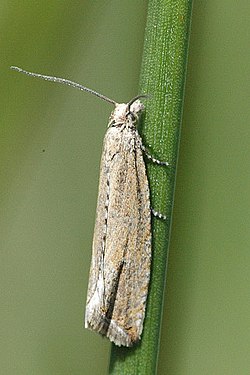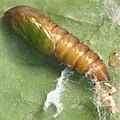| Tortricidae Temporal range: | |
|---|---|
 | |
| Bactra lancealana | |
| Scientific classification | |
| Kingdom: | Animalia |
| Phylum: | Arthropoda |
| Class: | Insecta |
| Order: | Lepidoptera |
| Infraorder: | Heteroneura |
| Clade: | Eulepidoptera |
| Clade: | Ditrysia |
| Clade: | Apoditrysia |
| Superfamily: | Tortricoidea Latreille, 1803 |
| Family: | Tortricidae Latreille, 1803 |
| Subfamilies & tribes | |
See also Taxonomy of Tortricidae for full list of genera. Contents | |
| Diversity | |
| Over 1,050 genera Over 10,350 species | |
| Synonyms | |
Olethreutidae | |
The Tortricidae are a family of moths, commonly known as tortrix moths or leafroller moths, [1] in the order Lepidoptera. This large family has over 11,000 species described, and is the sole member of the superfamily Tortricoidea, although the genus Heliocosma is sometimes placed within this superfamily. [2] [3] Many of these are economically important pests. Olethreutidae is a junior synonym. The typical resting posture is with the wings folded back, producing a rather rounded profile.
Notable tortricids include the codling moth and the spruce budworm, which are among the most well-studied of all insects because of their economic impact. [4]





